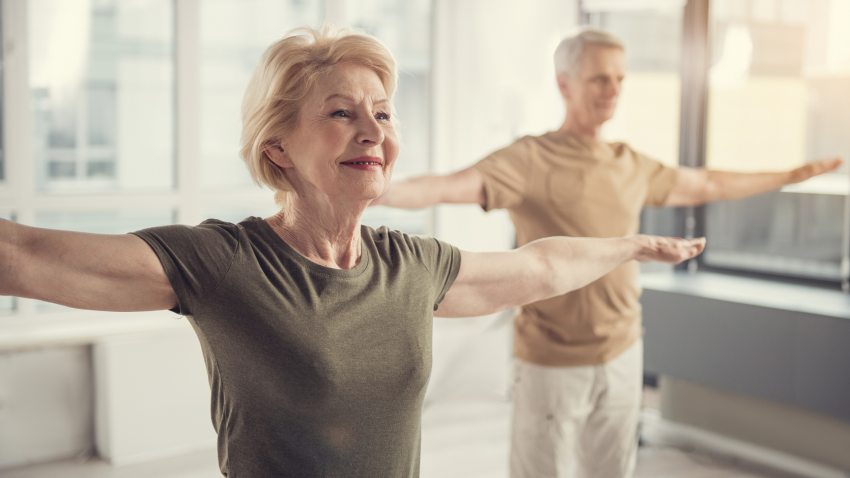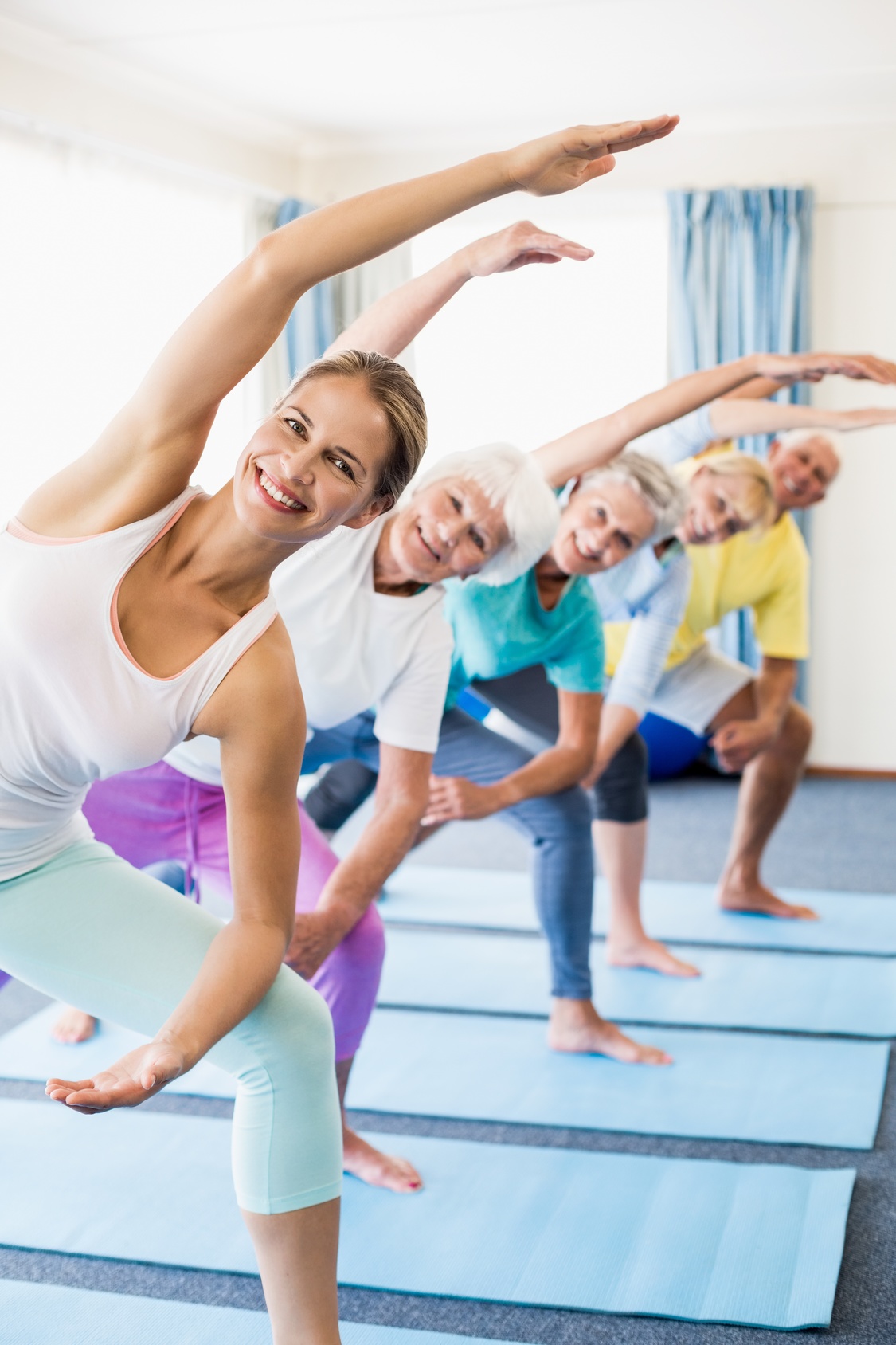View basket (0 items $0.00)

Yoga for Arthritis: Study Shows Yoga Reduces Arthritis Pain and Improves Well-being
Discomfort while walking. Pain in your hip, neck, or other joint area that wakes you up at night. Morning stiffness that can take over an hour to subside. These experiences are all-too-familiar for the one in five Americans who suffer from arthritis. However, according to a scientific study, yoga can help arthritis sufferers, and with more than just the pain. The study’s yoga program was designed by registered yoga therapist Steffany Moonaz, who is also a teacher at YogaUOnline.com.
Research on Yoga for Arthritis
It is well known that light exercise is one of the best remedies for arthritis, but for those who live with the almost constant pain and limitations of the condition, the thought of taking up a full-body exercise can be daunting. Exercise classes, even gentle ones, often take a “one size fits all” approach that simply doesn’t work, and finding a program that addresses the specific needs of your condition can be a challenge.
It was with this in mind that Dr. Susan Bartlett, faculty member at the Johns Hopkins School of Medicine and McGill University, began to consider whether yoga might be able to offer something unique for those with arthritis. Bartlett was interested in yoga’s focus on "listening to the body:” instead of assuming a baseline level of ability, yoga takes the attitude that we bring a changing set of limitations to the mat each day; an attitude perfect for those dealing with arthritic flare-ups. Yoga is also a “mindful exercise,” where the mind and the body work together, as opposed to exercise styles where the mind is distracted from the sensations of the body.
And indeed, Bartlett’s study, published in Journal of Rheumatology, found that the practice of yoga for arthritis produced significant positive results in patients that went beyond what one might expect.
The randomized, controlled study followed seventy-five patients dealing with osteoarthritis or rheumatoid arthritis. During the two-months of the study, half of the group who practiced yoga adapted to their specific needs while those in the control group maintained their usual lifestyles. The researchers were looking to see two things: first, was yoga safe for those suffering from arthritis, and secondly, could the practice benefit those with the condition.
 The researchers found that not only was the practice safe (yoga produced no adverse effects), but that it significantly decreased pain levels. Furthermore, the researchers were interested to find that yoga for arthritis improved energy, overall physical health, and psychological well-being as well. Not only this, but the positive effects of the eight-week yoga practice lasted, for some, up to nine months.
The researchers found that not only was the practice safe (yoga produced no adverse effects), but that it significantly decreased pain levels. Furthermore, the researchers were interested to find that yoga for arthritis improved energy, overall physical health, and psychological well-being as well. Not only this, but the positive effects of the eight-week yoga practice lasted, for some, up to nine months.
The researchers wrote: “We recently spoke with several participants... Now (five years later), they commented that yoga had played a pivotal role in changing how they viewed their function, and capabilities and attitude toward living with [arthritis]; they credited yoga with helping them maintain a more active lifestyle.”
Several of the participants were themselves surprised by the experience. "When I was diagnosed in 1995,” one study participant told The Baltimore Sun, “I honestly never thought I could do something like yoga. But [the trial] showed me I could, and I've found it makes a significant difference in my life living with arthritis."
This participant commented that the yoga she learned in the study improved her balance, her flexibility, and the strength of the muscles around her joints in ways she hadn't thought possible. She credited this with improving her quality of life: "Yoga strengthened the joints, and that helped me use the joints,” she said. “That reduced my pain level, which kept me more active. And my quality of life gradually started to improve. That's the most important thing — improving the quality of life. Without yoga, mine would not be what it is today."
Modifying Yoga Poses for Arthritic Practitioners
The study’s yoga program was designed by yoga therapist Steffany Moonaz, a long-term researcher in the benefits of yoga for arthritis. To maintain the purpose of each yoga posture but remove potential for injury or flare ups, Moonaz, who has spent many years teaching yoga to chronic pain sufferers, developed pose modifications specific to the needs of those with arthritis. Props such as wedges and chairs were also brought in to help reduce pressure and adjust the angle of certain poses.
"Sometimes the modification looks nothing like the original pose," Moonaz said. "I might take the pose and flip it over on its back, or I might take a downward dog" — a pose with hands and feet on the floor — "and [move] it against the wall. You're still getting that lengthening of the hamstring and elongated spine, but you won't be putting pressure on painful joints."
By adapting the yoga poses in this way, Moonaz was able to help each participant strengthen and lengthen the muscles supporting their joints while protecting inflamed areas.
"We've seen countless people and their lives transformed by yoga," Moonaz said, "and not just because they have less pain or more flexibility, but because the way they see things has changed. The main idea is yes, you have this disease, but no, it does not dictate what the rest of your life will be like."
You may be interested in our upcoming course with Lynn Crimando, Yoga for Arthritis: Prevention, Relief, and Principles of Safe Practice.
Featured Courses









